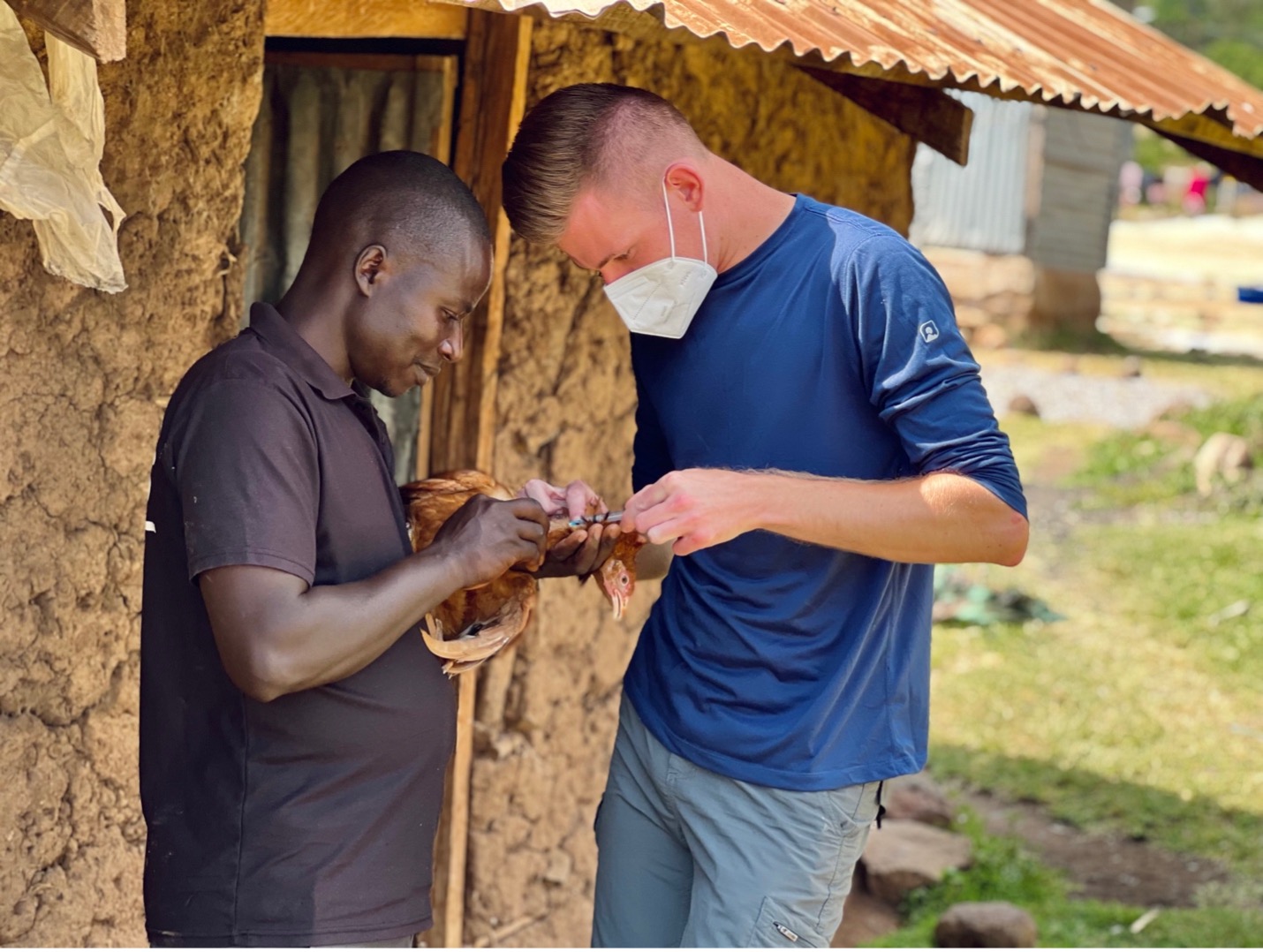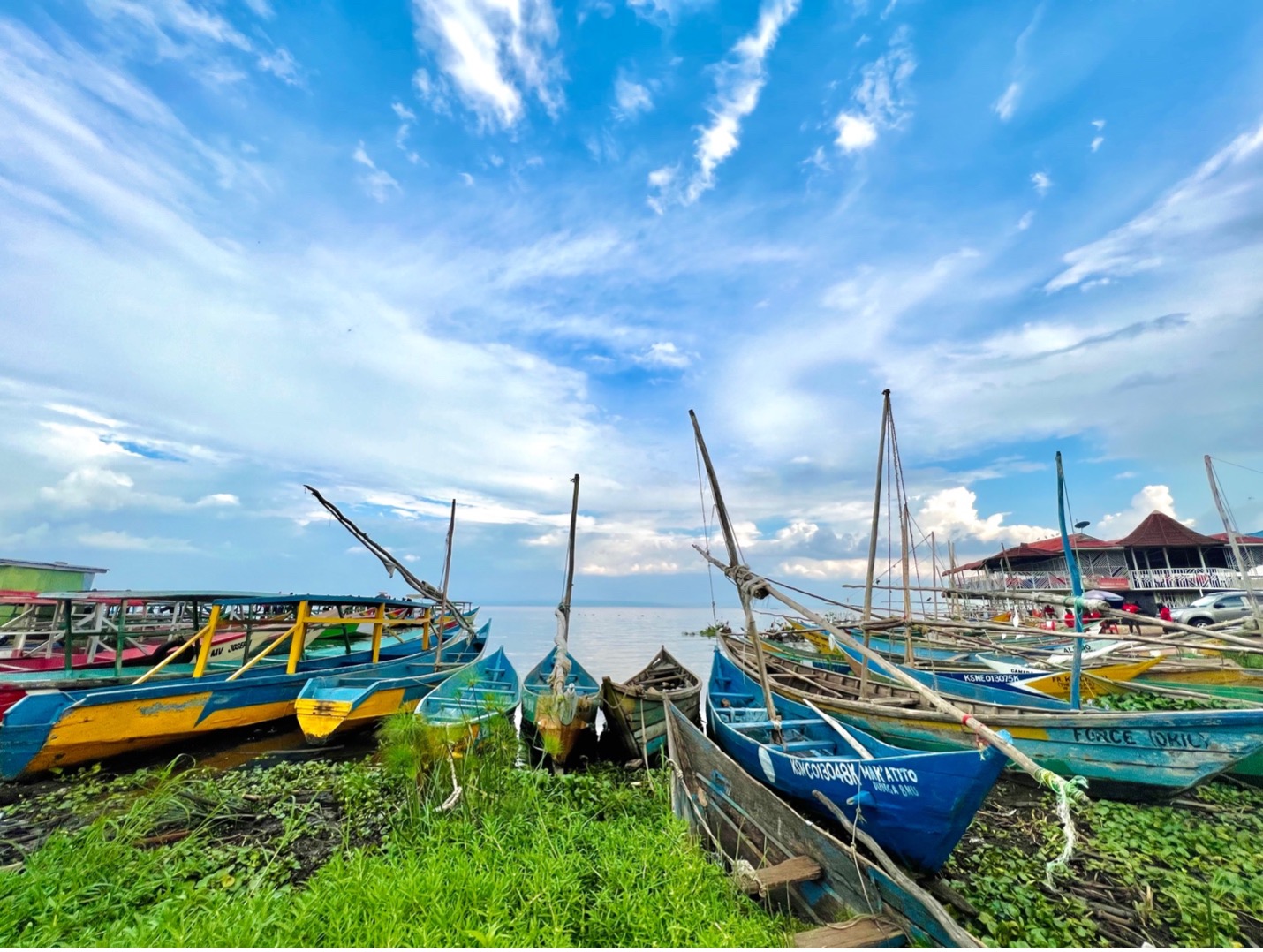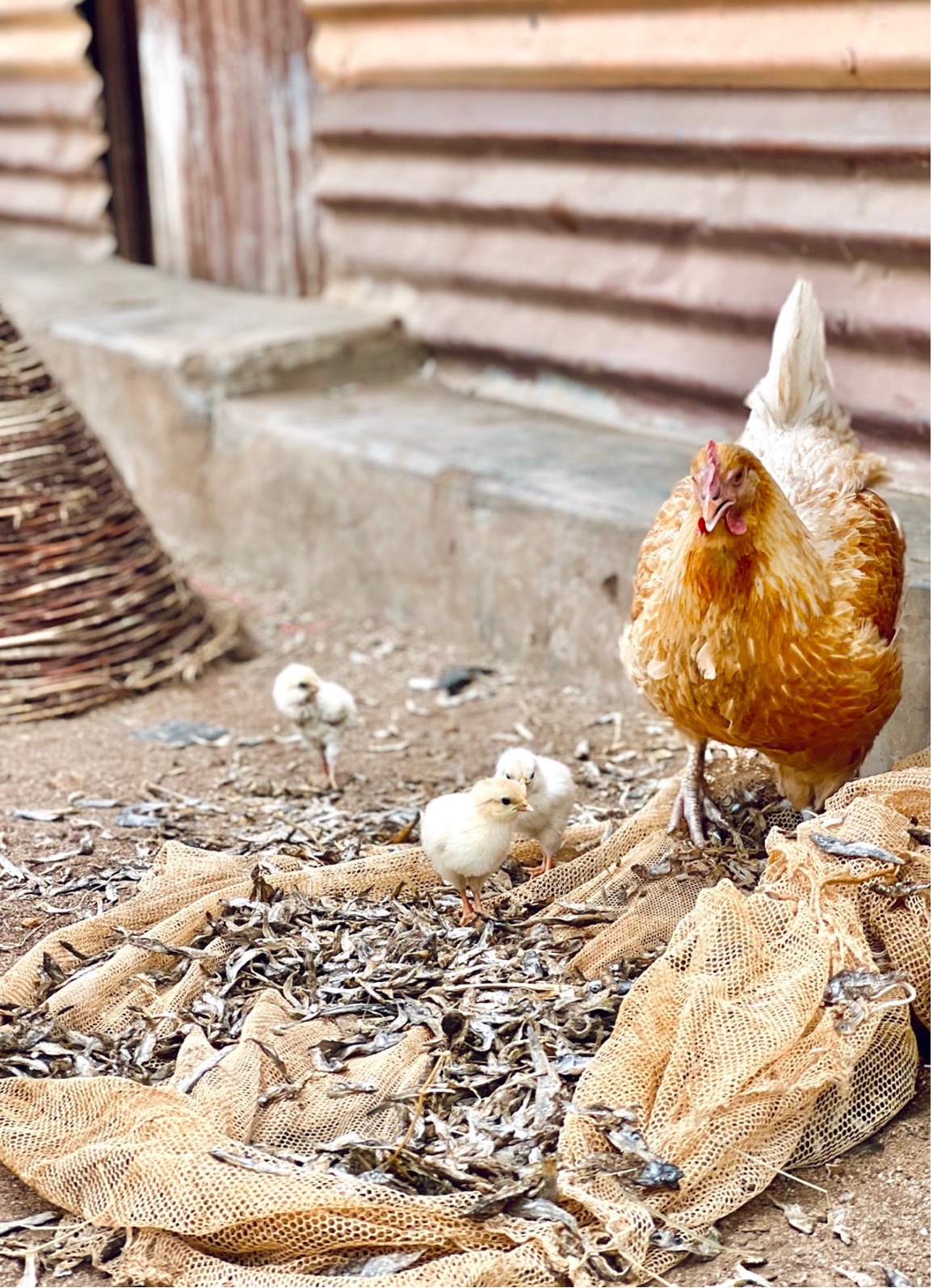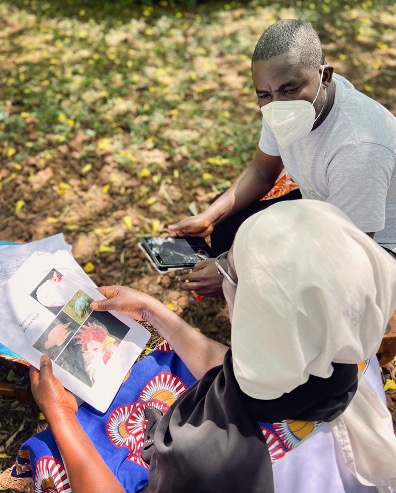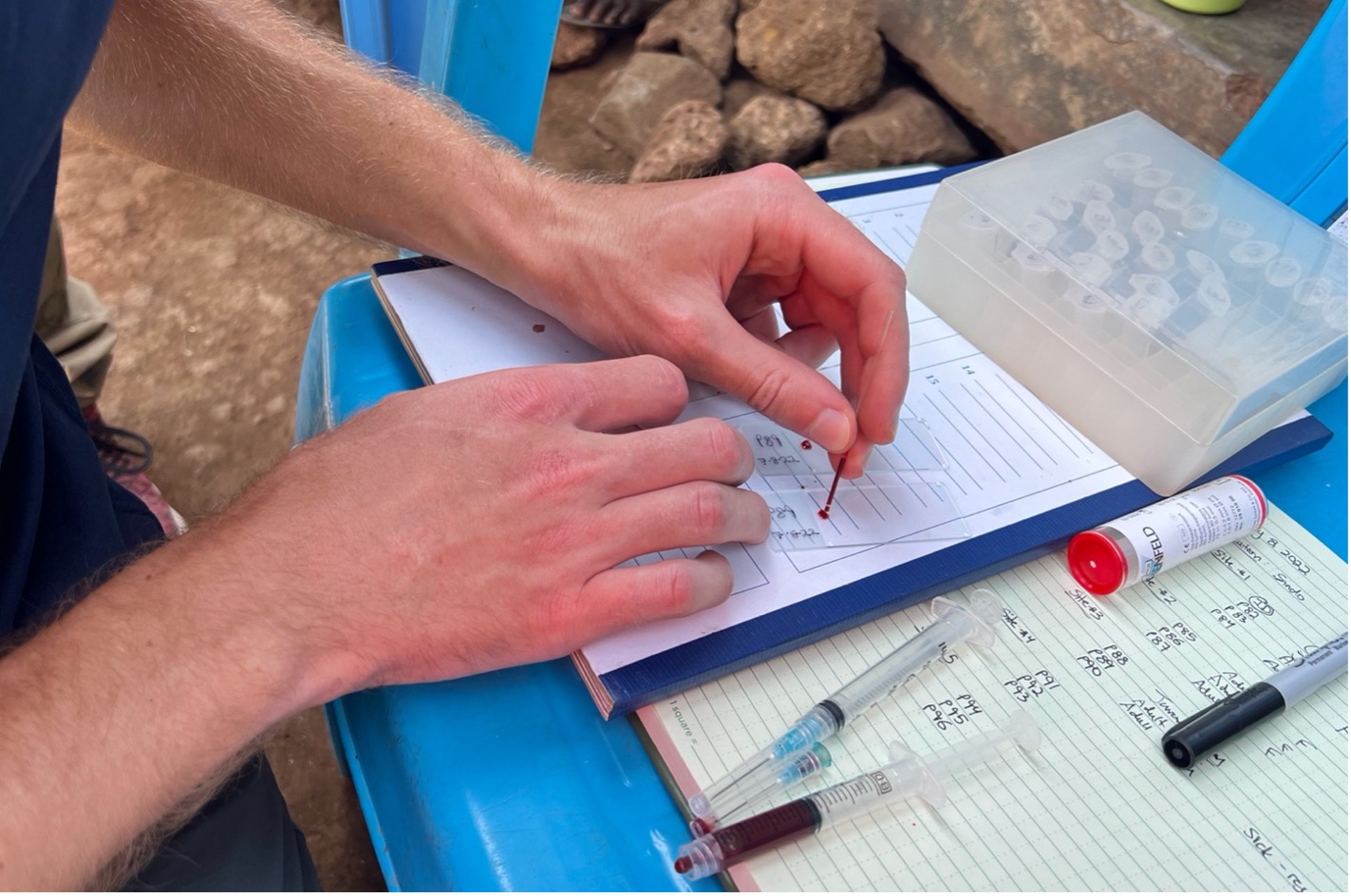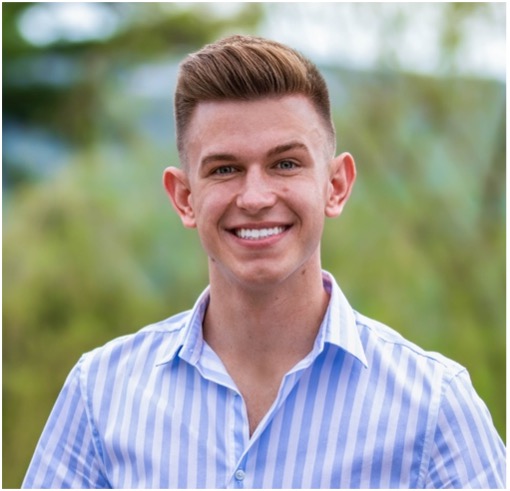Chasing Chickens in Kenya: Linking Poultry Health and Harmful Algal Blooms
By Alexander Levitskiy, Cornell University College of Veterinary Medicine DVM Candidate '24
Poultry health, harmful algal blooms, and Kenyan fishing communities—you might be wondering, how exactly are these concepts linked? Join me on the tale of my summer in Kenya, where I was exploring these topics. To begin, one must appreciate what harmful algal blooms (HABs) entail. HABs result from growth of toxin-producing algae on bodies of water, which poses environmental and health issues. Given the global prevalence of HABS, it should not be surprising that the world’s largest tropical lake, Kenya’s Lake Victoria, is affected. Amidst these HABs, there can be a range of cyanobacteria producing toxins, such as microcystin (MC), often an important one. MC has been documented to negatively impact animal and human health, whether it be an animal drinking contaminated water and dying an acute death, or a person experiencing rashes from contact with cyanotoxins while swimming in an affected body of water (including sometimes in Cayuga Lake!).
Additionally, there are concerns that fish accumulate MC in their tissues, which are then eaten by people. This stepwise progression through the food web is especially alarming when considering Kenyan fishing communities, for whom food security is an ongoing concern. Are individuals harming themselves from excessive MC intake as they try to include animal protein in their diet? Is the water they rely on safe, or does it harbor dangerous levels of MC? These various lines of inquiry are pressing, and researchers across the domains of toxicology, microbiology, ecology, public health, and planetary health are aiming to advance our understanding of HABs and MC’s multi-faceted health impacts.
Dr. Kathryn Fiorella, an Assistant Professor in the Cornell University College of Veterinary Medicine’s Department of Public and Ecosystem Health, leads transdisciplinary research on these very topics. She has a research partnership with the Kenya Marine and Fisheries Research Institute (KMFRI), which is a government organization dedicated to research and development involving fisheries, ecology, aquaculture, and more.
I had the opportunity to develop an independent research project within this infrastructure, which was supported financially by the CVM's Expanding Horizons international engaged learning grants program. As a veterinary student with strong research and avian interests, I was curious whether I could integrate my passions in a salient manner. Much to my delight, this integration was in fact possible! I sought to explore whether MC is having an effect elsewhere in the food web, beyond the fish-human axis. Poultry that free-range in lakeside fishing villages should in theory be exposed to lake water and fish like dagaa (Rastrineobola argentea). Dagaa are quite small, so they are often sun-dried and eaten whole by people, and chickens can opportunistically feed on them as they are being dried around the villages. However, dagaa are known to be an important MC exposure risk.
With all that information in mind, I spent the spring 2022 semester reading the literature and holding many meetings so that I truly could get the most out of a summer project that would span the worlds of poultry health, food security, and public health. I decided to embrace the beauty of transdisciplinary research and venture even further into the realm of social sciences to complement my veterinary research. I set out to survey poultry owners to learn more about their poultry husbandry and health. Of particular importance, I was curious whether their chickens drink lake water, whether they eat fish scraps, and whether they are supplementally fed dagaa. I hypothesized those to be the means via which chickens would potentially be exposed to MC. If exposed, then I hypothesized that the chickens would have heightened levels of physiological stress, which would leave them more susceptible to infectious disease.
In parallel to the above research inquiries, I also desired to investigate the seroprevalence of infectious bursal disease (IBD) in chickens that live along the lake in fishing communities, and compare it to that of chickens that live inland (and that are thus likely not exposed to MC). I needed to capture a wide understanding of the poultry scene in Kenyan fishing villages because, for a part of the world where food insecurity is common, it is important to consider all the ways to minimize poultry losses.
It was truly a summer of firsts—my first time in Kenya, my first exposure to fisheries, and my first attempt at dabbling in the social sciences. With a suitcase full of research supplies and my carry-on item being an ELISA kit, I felt like a newly minted researcher ready to tackle the world—people in the airport probably had slightly different thoughts in mind though as I lugged around a cooler with my precious kit.
My first days in Kenya were extraordinarily eye-opening. Within the city of Kisumu, I lived adjacent to a poverty-stricken region, which provided a tangible perspective on the struggles a significant portion of Kenyans endure on a daily basis. One of the benefits of this trip was the opportunity to experience a reality so unlike my own; it is one thing to conceptualize what hunger is in theory as opposed to witnessing it firsthand. I was continuously moved throughout the summer, and my inspiration to have a career whereby I can help communities in such circumstances via transdisciplinary research grew.
Once I was settled in Kisumu, a port city along Lake Victoria, I was warmly welcomed by everyone at KMFRI despite my odd intentions to research poultry at a fish-centric institute. My research team consisted of a socioeconomics research scientist, Patrick Otuo, and an intern, Evans Abich. We launched immediately into research planning, and along the way we were able to exchange ideas drawing from our respective areas of expertise and strengthen the project; this synergy was precisely what I had been eager to experience. Veterinary medicine stands to benefit greatly from other fields, and vice versa. One shared pillar from the beginning was the need to work closely with the community.
We designed a plan to interview poultry owners and sample their chickens at lakeside and inland locations in Kisumu, Siaya, and Homa Bay Counties, all of which are situated around Winam Gulf in Lake Victoria. For poultry owners who consented to partake in the study, they were interviewed by Patrick while Evans and I took a blood sample from three of their chickens (for serum collection and preparation of blood smears). Individuals were invited to observe sample collection if that was of interest, as we wanted to build trust and demonstrate that the chickens would not be harmed in the process. I was always most surprised when school children would crowd around me and not wince at the sight of blood. We provided a token of appreciation to poultry owners for their time and cooperation in the form of a small payment, and we hope our approach to collecting data left a positive perception of KMFRI and Cornell University so that future research endeavors are welcomed.
While I make this experience sound grand, it was not without challenges. During my initial weeks in Kenya, I had to find my bearings and appreciate what institutional and laboratory capacity existed. An important facet of international research is embracing flexibility and being able to implement an improvised plan.
When I realized that not all my laboratory work would be possible to pursue, I was naturally disheartened. I remained focused on my research goals and ended up gaining more skills via my alternative plans—a silver lining to the deviation from what I had been taught was the gold standard. When logistical challenges kept me from fieldwork, I utilized the time to engage with the culture and learn from people at KMFRI. It was astonishing to witness the booming aquaculture industry, perfect my ability to eat ugali (though let’s be honest, I struggled the entire summer to eat this maize flour porridge with my hands and provided laughs for many), learn about the various strategies implemented historically and today to control the invasive water hyacinth on Lake Victoria, and the list goes on.
Although I am back in Ithaca ready to tackle a new semester, I will be continuing with data analysis and acquiring more research skills along the way. Conducting 34 surveys and sampling 102 chickens exceeded my expectations, so I am eager to see how my project contributes to our collective knowledge of MC in Kenya.
I am thankful to have had this opportunity and support from the CVM’s Expanding Horizons program, the Fiorella Research Group, and KMFRI. Seeing and engaging with life in a developing country has reaffirmed my aspirations of pursuing a career that incorporates planetary and global health. I was privileged to appreciate the beauty of Kenya and its cultures, and I hope that I can build upon the relationships that were seeded and fostered this summer.
Alexander Levitskiy, class of 2024, is a third-year DVM student at the Cornell University College of Veterinary Medicine. He is from Cortland, NY and received his B.S. in Animal Science and Biological Sciences from Cornell University College of Agriculture and Life Sciences. He has interests in conservation, avian/wildlife medicine, planetary health, and One Health research.

